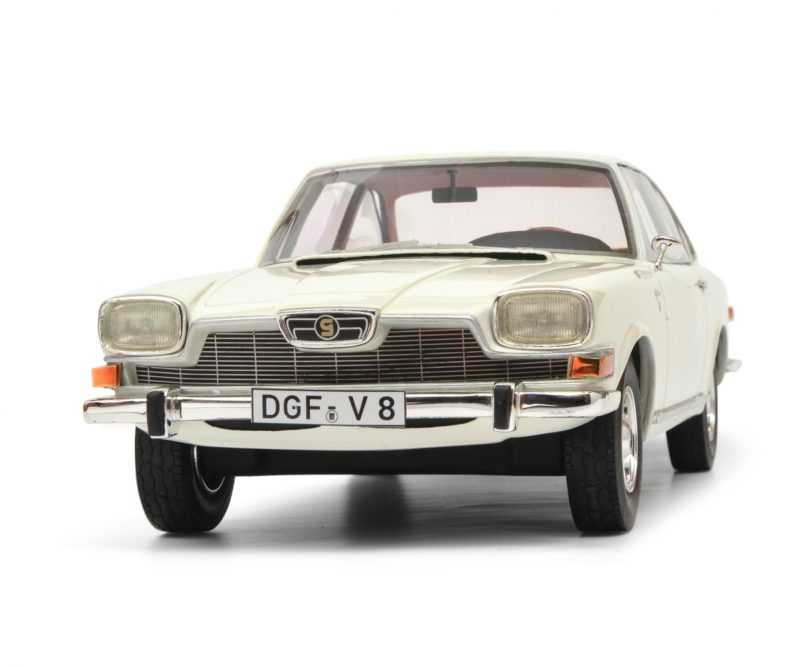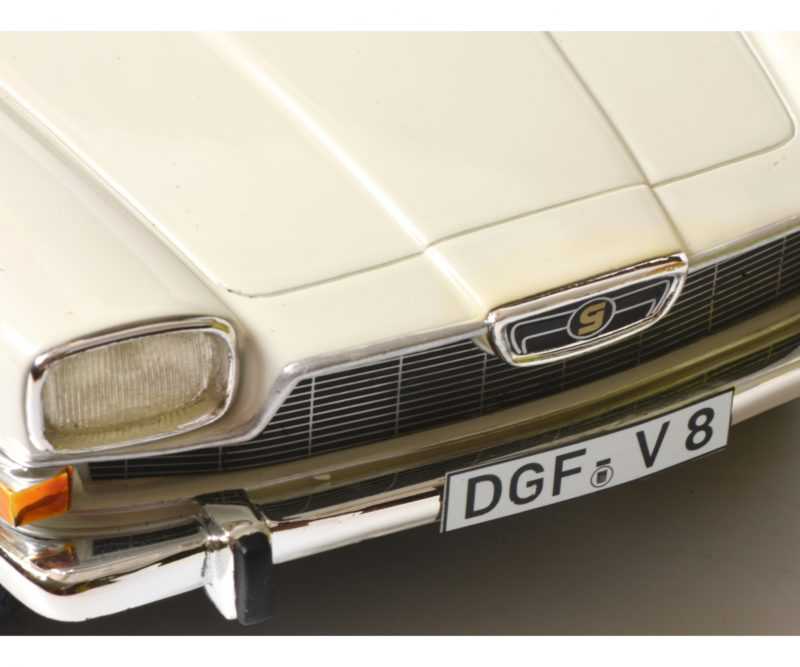It was a prestige project by Hans Glas Gmbh, a serious V8 coupé from Dingolfing. The Glas 2600 V8, designed by Frua, had to compete with the large luxury sports coupés of that time. Glass had evolved since the XNUMXs Motor roller builder and Goggomobil producer to a manufacturer who was also able to produce larger creations. The company grew to the status of seriousnesszunehmen car builder. And it entered the higher echelons of the automotive market during the prosperous 2600s. Show horse Glas 8 VXNUMX was destined to become the highlight within that saga.
Within a year of the decision to come up with a large coupé - inspired by the nice success of the 1300 GT - a luxury coupé arose. Dingolfing equipped the Glas 2600 V8 with a “double 1.300 V-shaped engine”. Not entirely coincidentally, it was inspired by…. The 1300 engine used by Glas in some models. For the V8 this meant one overhead camshaft per cylinder bank and two timing belts. The belt drive was a trademark of Glas in the 1004s, who also made the construction of the overhead camshaft and belt drive debut on the smaller models (1500). Frua designed several beautiful constructions for the signature of the body. Glass to name. The 1700 and 1300 sedan and the coupés (1700 GT and XNUMX GT) are captivating examples of this.
Baptism of fire in 1965
The Glas 2600 V8 got its (or should we say "her"?) Baptism of fire at the IAA in Frankfurt in 1965. It took another year before the Glas was Serienreif. The first copies were delivered by Glas in August 1966. The new Glas exotic got the 2.580 cc engine with 3 twin Solex downdraft carburettors. The power source was good for 150 DIN-PK. The V8 enabled the Glas 2600 to reach a top speed of 200 kilometers per hour. The chassis consisted of a De Dion axle, panhard rod, semi-elliptical leaf springs and self-adjusting Hydromat rear shock absorbers. The front wheels were independently suspended from double triangular wishbones. A stabilizer was also installed at the front in Dingolfing. Brakes? Front discs and rear drums.
glass era
The technology was packaged in a beautiful carriage with large glass areas. The Italian signature under the body was clearly visible. Due to the Maserati resemblance, the Glas 2600 V8 got its nickname “Glaserati”. No matter how fancy, the pretentious and fabulously beautiful Glas 2600 V8 didn't bring big bucks to eastern Bavaria. Glass ran into financial trouble, and was released on November 10, 1966 Dingolfing from BMW. That put the 3 liter version on the market as a BMW Glas 3000 V8. It was the successor to the 2600 V8, which was actually only built for half a year and sold 300 times.
Scale model in 1 in 18
The modest production number does not alter the fact that Glas built a beautiful coupé. Model car manufacturer Schuco previously saw reason to reduce the BMW Glas 3000 V8 eighteen times. And added with the oer Glass V8 is a beautiful model to the PRO.R. line. Again they did that in the scale 1:18. This is also a true-to-life version, which does the one-on-one example of the Glas 2600 V8 very much justice. It is a fully closed model, the doors, hood and boot lid cannot be opened.
Throbbing details, made of resin
This does not detract from the fact that a lot of attention has been paid to the detailing. The Frua logos in the C-pillars, the dimensions, the grille, the tire-rim ratio, the frame lines, the lighting units: everything is taken care of. A grumpy ear will notice that the window pillars on the side could have been a little more profiled, but that criticism falls within the overall package (as far as the undersigned is concerned). The interior is also an example of beautiful miniature construction. The wooden steering wheel with three spokes is very lifelike, the color scheme of the interior is beautiful. Even the absence of the right exterior mirror has been considered. The resin-built model is very successful across the board.
Strong price for a very good model
Schuco - which in several respects strongly focuses on German pre-27s models in particular - has delivered craftsmanship, as has been done for years. Schuco still has the model in stock (10-2020-2600). The model builder from Germany produced the Glas 8 V500 scale model in an edition of 159 pieces. For those who have paid attention: more often than the original. For this exclusivity, the collector does dig deep into his pouch. Schuco uses a suggested retail price of € XNUMX on its own website. That is considerable, but for that amount the enthusiast really gets a very good model in his hands.
Photo credits: © 2020 DICKIE Spielzeug GmbH & Co. KG









I drove a Glass 1967 CL from 1970 to 1304. A pearl at the time.
My best friend was driving a 1304-speed 5 TS.
Mr. Glass should have paid more attention to quality. Major negatives were: The handbrake never worked, always broken. While accelerating at a certain speed, the intake neck between the engine carburettor froze and then the engine stopped and you had no more power. So you had to stop and wait for the ice to melt. Dangerous when passing by. If it sometimes rained for 2 or 3 days in a row, the spark plugs and rotor in the Delco were wet. Dry new spark plugs and delco. Call Best Touring Road Assistance for assistance.
The garage in question, with agency, did not have trained personnel and offered little assistance. Despite the fact that I loved that car, I got rid of it because of misery. If Hans had paid more attention to quality, he would have built up a steady customer base. In the last instance, the type 1700 completely broke his neck. That was worth nothing. A real shame for a man with those qualities.
Beautiful car, a few years ago I had one for the MOT in the south of the country, In reasonably good condition. The customer has sold it to another enthusiast. Solid technology, beautiful styling.
With regard to the car museums Jan, have you been to the Technikmuseum in Sinsheim? Fantastic! It takes a while, but then you also have something.
Back then, BMW still had sleek, German-Italian lines. Very different from the beaver (Chinese) style of today.
Beautiful model. The dashboard was called “Uhrenladen” because of the seven round dials. The beautiful oval headlamps were of course very expensive to produce for such a small series, which is why existing Setra bus headlamps were purchased from Kässbohrer.
Nice addition Olav! Thank you. Glass made use of existing manufacturers in several respects for the supply of parts, such as Mercedes-Benz. A shame that such a beautiful model was defunct relatively quickly because BMW saw reason to develop models itself.
I read your chunks of reading material as well as the monthly magazine with great interest Auto Motor Klassiek. I think it is very important that the authors write their pieces and thus ensure that their knowledge is preserved. You can restore old cars, but not their drivers.
Keeping old-timers driving is an expensive hobby but also inspiring.
The retirees among us have a wealth of experience that should be used for as long as possible. I now have my 13th car in use and am quite impressed with the technical progress. How do you view Auto museums?